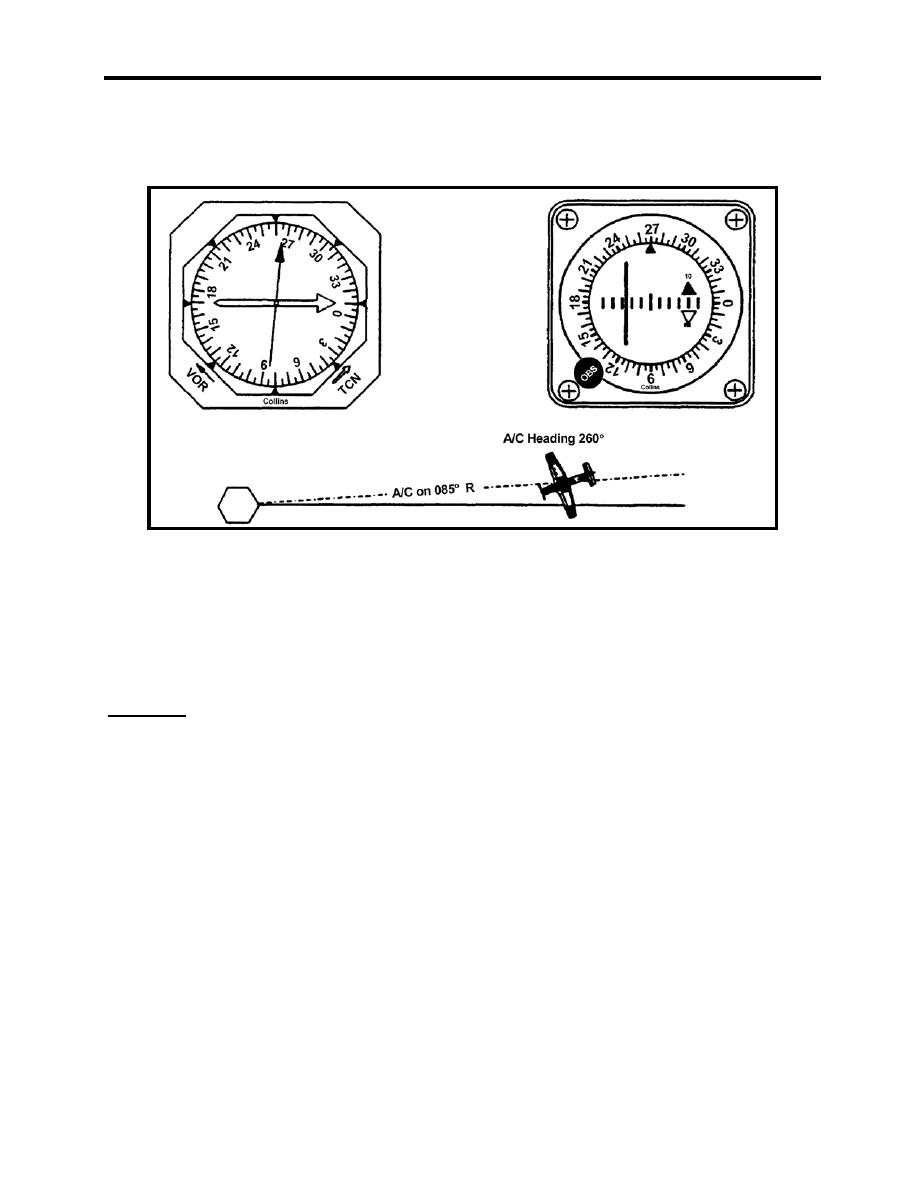 |
|||
|
|
|||
|
|
|||
| ||||||||||
|
|  T-34C INSTRUMENTS
CHAPTER SIX
c.
The head of the needle is now in a position to fall to the desired course.
Figure 616 illustrates a doubletheangle intercept to a course of 270.
Figure 616 Aircraft on 085 Radial
d.
Judge the rate of intercept and plan the turn to roll out on course.
e.
Track on the desired course.
610.
CLIMBS & DESCENTS
Reference:
NIFM Part VI, "Enroute Procedures"; AIM, Chapter 4.
Amplification Sections 611 613 will describe the various types of climbs and descents to be
used when transiting from the terminal to the enroute structure and back.
NOTE
ATC requires a climb or descent rate consistent with the operating
characteristics of the aircraft to 1000 feet above or below the assigned
altitude. Once within 1000 feet of assigned altitude, attempt to climb
or descend at a rate between 500 FPM to 1500 FPM to the assigned
altitude. If unable to climb or descend at a rate of at least 500 FPM,
advise ATC.
611.
CLIMBS
1.
Amplification Occasionally, ATC will find it necessary to assign a higher altitude to
comply with IFR separation standards; a pilot may also request a different altitude to take
RADIO INSTRUMENT FLIGHT PROCEDURES 6-25
|
|
Privacy Statement - Press Release - Copyright Information. - Contact Us |